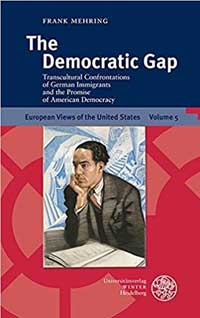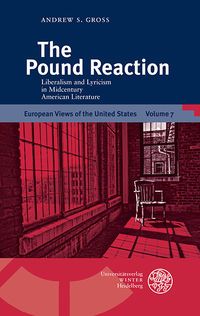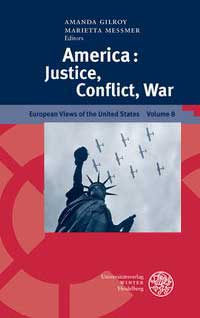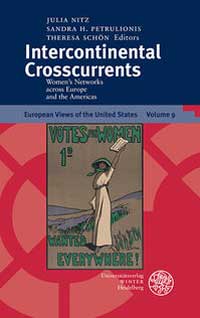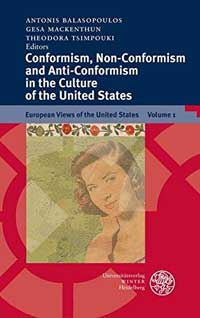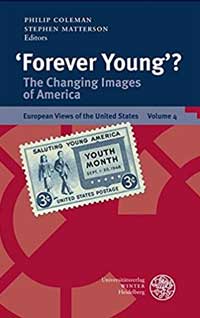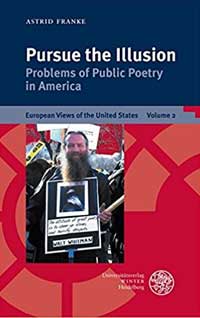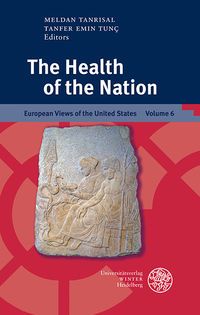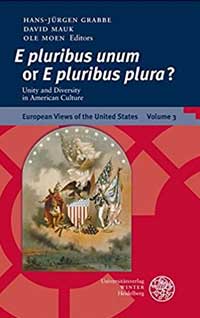Eric J. Sundquist, Strangers in the Land: Blacks, Jews, Post-Holocaust America
Eric J. Sundquist, Strangers in the Land: Blacks, Jews, Post-Holocaust America. Cambridge, Massachusetts : The Belknap Press of Harvard University Press, 2005.
662 pp. ISBN 0-674-01942-3
Eric J. Sundquist's Strangers in the Land: Blacks, Jews, Post-Holocaust America is a fascinating exploration of the cultural history of the relationship between African Americans and American Jews in the second half of the twentieth century. This exploration is both extensive and intensive: it not only provides a thorough description of the social, economic and cultural context in which the relationships between blacks and Jews were formed, developed and finally severed, including the most important and relevant events in Jewish and African American history after WWII; it also presents the reader with detailed analyses of specific and representative novels, in particular Harper Lee's To Kill a Mockingbird, William Melvin Kelley's A Different Drummer, Paule Marshall's The Chosen Place, the Timeless People, and Bernard Malamud's The Tenants.
Strangers in the Land focuses primarily on African Americans' perceptions of Jews and Jewish history, describing the profound and sometimes unexpected effects of the Holocaust on the relationship between blacks and Jews. But the central premise of this study is that the evolution of these perceptions and of the relationship between blacks and Jews sheds an illuminating light on American culture and cultural politics. All Americans need to understand the complex relationship between these "strangers in the land" not only because of the essential contribution of blacks and Jews to the definition of American intellectual and cultural life, but also because of what the conflicts between blacks and Jews reveal about the promises and failures of American society.
Eric J. Sundquist demonstrates that two main paradigms define African Americans' perceptions of Jews and Jewish history: the biblical Exodus and the Holocaust. In the symbol of the biblical Exodus, African Americans have found the vital expression of their longing for freedom in America. But the example of the Holocaust turns out to be more problematic. Eric J. Sundquist explains that, on the one hand, the lens of the Holocaust can be seen as a means of knowing, of remembering the experience and trauma of the Middle Passage and slavery, as in Derek Walcott's poems. On the other hand, the comparison between slavery and the Holocaust sometimes leads to a futile and absurd competition for the recognition of slavery and black suffering as the worst, the most horrendous "holocaust". As the Holocaust became a metaphor and a means of establishing one's identity through vicarious suffering in American culture, the problems of comparability and incommensurability raised by the comparison with the genocide of the Jews were compounded by the risk of the trivialization of both the traumatic experience of slavery and the Holocaust. Although these comparisons were fuelled in part by jealousy and resentment, they represent an attempt to find a compelling and meaningful form of language (image, metaphor or symbol) in the American cultural context in order to obtain the recognition and memorialization of black suffering. However such comparisons fail and backfire when they are not made and developed with nuance and care. Because of these failures and distortions, the Jewish models often aggravated the tensions and conflicts between blacks and Jews, instead of inciting blacks to find affinities with Jews. Thus, Strangers in the Land explores the problematic role of the Jewish models in the search for African American identity and memory, in particular when emulation generates frustration, envy, and resentment.
Eric J. Sundquist also examines the literary expression of the relationships between black and Jews in his perceptive analysis and contextualization of a certain number of representative novels. His illuminating interpretation of Bernard Malamud's The Tenants demonstrates that this novel cannot be understood without a thorough understanding of the historical, political, social and cultural context in which the text was written and published. He then identifies and explains the literary context: the literary tradition and genre of the novel, the numerous allusions to a certain number of literary works and to the literary debates or quarrels between blacks and Jews in the sixties, including the relations between The Tenants and Bernard Malamud's earlier stories.
Although Jews and blacks went their separate ways in the eighties and nineties, Strangers in the Land suggests that the memory of their shared history (of the black-Jewish civil rights alliance), of their "ambiguous brotherhood," in Eric J. Sundquist's phrase, still defines American society and culture. Philip Roth's The Human Stain illustrates this relation and ironically suggests the persistent similarities between the experiences of blacks and Jews: according to Sundquist, the death of Coleman Silk reveals the precarious "whiteness" of the Jew who is never white enough to escape anti-Semitic violence; conversely, African Americans can still be seen as "America's Jews", the most disadvantaged outsiders.
These similarities cannot obscure the undeniable differences between the two groups (in terms of social and economic success) or their still intense disagreements. However, the reader may feel that the image of the parallel lines, which Sundquist evokes in his concluding remarks to crystallize these similarities presently incompatible with convergence or communion, materializes a peculiar form of togetherness, which could serve as the basis for new forms of collaboration and alliance.
Eric J. Sundquist does not reach such an optimistic conclusion: such conjectures, when the sense of irretrievable loss is still palpable, would be inappropriate in a work clearly devoted to the rigorous and thorough study of the cultural and literary facts which illuminate the relationship between blacks and Jews. Rather than indulging in unjustified (and politically correct) optimism, Strangers in the Land presents the readers with the precision, erudition, intelligence and a sense of balance which fulfil all the pleasures of reading and signal an indispensable work of literary criticism and cultural history.
Michaël Taugis
Associate Professor of American Literature at the University of Poitiers


